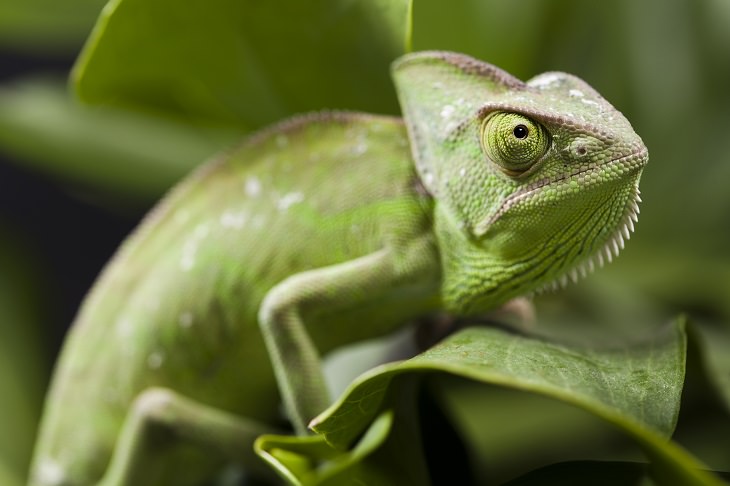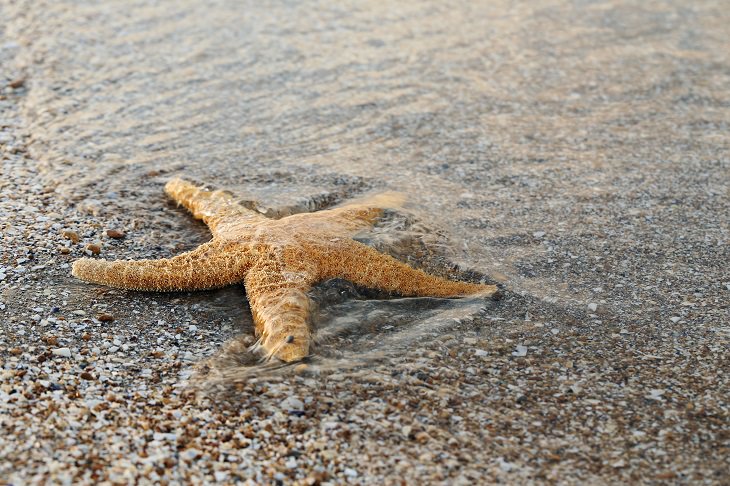
It’s really easy for us to forget that so many of our wonderful technological breakthroughs came about by observing raw nature. New inventions are always impressive, but just how original are they? Below are 7 inventions that you thought were all human, but, truth be told, animals got there first.

Have you ever looked out a plane window just before landing and noticed small slats pop up on the wing? These slats are designed to prevent the airplane from stalling as it slows down.
Birds have their own version of this clever technology in the shape of specially adapted feathers. A bird’s feathers are divided into primary and secondary feathers, with some being vital for flight and others for display.
However, there’s nothing impractical about the feathers on the part of the wing known as the “alula” (the front edge of the wing where a bird’s thumb would be). The bird can adjust these feathers to open up a small slot that helps to stabilize the bird and avoid a stall in slow flight or upon landing.
Ships, submarines, and seagoing devices often use sonar to navigate, avoid obstacles, and track down underwater targets. Sonar works by emitting a sound at a certain frequency, which spreads sound waves into the surroundings.
These sound waves bounce off solid objects and return to the sonar device that emitted them. The sonar device then gathers information about the size, shape, and distance of the objects. This is extremely useful for the military, but whales and dolphins were using it first.
These amazing creatures can discern differences between very small objects from 15 meters away using their sonar skills alone. They don’t need an electronic device to broadcast their frequencies across the ocean, as they have evolved to use their voices and the receptors in their bodies to find their way around the ocean.
Military sonar is very similar to whale sonar, and some people have speculated that this may be causing mass beachings of dolphins and whales, as they may have become confused between their own signals and that of the military.

As humans, we’re subjected to the effects of UV light all the time, but we can’t see it. That’s why we tend to get sunburned easily. Nowadays, you can purchase light detectors that translate UV waves into a form you can see.
The structure of an animal’s eye is partly made up of proteins called opsins. Some animals only have one or two types of opsins in their eyes, so they see fewer colors and types of light waves than humans. In contrast, humans have three types of opsins, allowing us to see many colors.
However, some animals, such as the chameleon, have more than three types of opsins in their eyes. As a result, they can see UV light rays in addition to the colors that we can see. Chameleons can do all this with their naked eyes, no devices required. There are many other reptiles, birds, insects, and water-dwelling creatures that may also be able to see UV light.
Recently, some scientists were studying spotted salamanders and they found that the embryos of these lizards contain algae that live inside the baby salamanders before they hatch. The algae survive by eating the waste produced by the salamander embryos, while, in turn, the algae produce energy and nutrition for the developing lizard babies.
Therefore, these lizards are essentially brought up via photosynthesis, the same process plants use to convert sunlight to energy. It’s also similar to how photovoltaic cells (solar panels) convert sunlight into electricity.
If you have ever spent some time in a soundproofed room, you might have enjoyed the peace. A combination of absorbent materials and insulative layers create an atmosphere where little extraneous sound can be heard.
For generations, owls have been using these exact same qualities for less peaceful reasons. In order to be able to glide in on their prey with deadly precision, owls must be completely silent because the rodents they hunt have an incredibly sharp sense of hearing.
For example, a barn owl’s feathers are so soft and fine that it cannot afford to hunt in wet weather as it would become waterlogged and cold. This is the price they pay for their perfectly soundproof body. It’s the design of the feathers that achieve this – tiny divides and fibers separate the flow of air through the wings, which prevents any rasping sounds that would be caused by air resistance.

After the Dolly the sheep controversy, you might have assumed that cloning was a new phenomenon, but the starfish would tend to disagree.
Starfish have been asexually reproducing since well before cloning even became a word. Not only that, but starfish that clone themselves live longer and healthier lives than those that reproduce sexually. Additionally, if a starfish loses a limb or is cut in half, it can regrow and regenerate itself pretty easily. Some species even have the ability to produce a whole new body from just part of a severed limb.
Birds migrating is still somewhat of a mystery to scientists. There are so many explanations as to how birds know where to go – the sun’s position, the use of a star map, their sense of smell, their memory of major landmarks, or the detection of the Earth’s magnetic field.
However, none of these seem to fully explain how birds are able to navigate so successfully and consistently to remote destinations, often under hostile conditions and no prior knowledge of the route. It’s as if they have some advanced GPS technology built into their little bird brains.
The magnetic field theory seems most likely, as foxes have also been shown to align themselves with the Earth’s magnetic field to hunt. Therefore, if other animals are savvy about magnetic fields, why wouldn’t birds be? After all, it’s not too different from the compasses that we use to navigate.
Source: listverse
Related Article:
Guide to Surviving a Snake Encounter